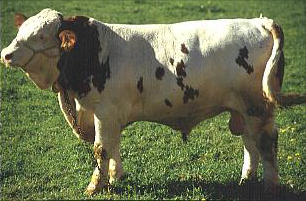With the change in energy assessment in cattle fattening, the Society for Nutrition Physiology in 1995 (GEH 1995) also issued supply recommendations for fattening Simmental bulls. Nutrient and energy levels and requirements were determined in extensive studies in Weihenstephan (KIRCHGESSNER et al., 1994; KIRCHGESSNER et al., 1995; SCHWARZ and KIRCHGESSNER, 1995; SCHWARZ et al., 1995). In contrast to the previously usual supply recommendations, the recommendations for crude protein and energy were increased, especially at the beginning of fattening (GRUBER, 1996; STEINWIDDER , 1996), whereas they decreased for crude protein at the end of fattening. In practice, when aiming for high gains, the limits of a ruminant-friendly ration are repeatedly reached, especially at the start of fattening. According to current standards, very high amounts of protein and energy concentrate are required here, even when using high-energy corn silage. At the end of fattening, amounts of concentrated protein feed that are still higher than the norms are sometimes used. The aim of the present experiment was therefore to investigate the influence of protein and energy supply on fattening and slaughter performance, meat quality, N excretion and economic questions.
Further information on project management can be found in the database for research and sustainable development (Dafne) -> Link







